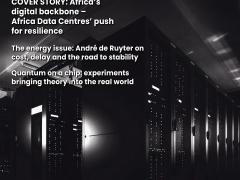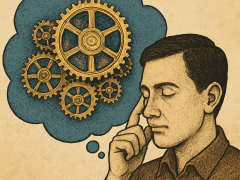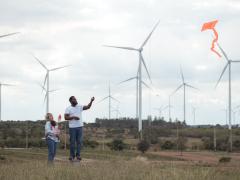Not everything needs a blockchain. But everything, at some point, will fail.
And when it does — in the dark, during load-shedding, after a corrupted update or a dropped signal — the system you built will either halt, or it will do something smarter: it will split, adapt, keep going.
That’s the lesson engineers are drawing — not from cryptocurrency, but from how decentralised systems survive disagreement. Blockchain networks don’t avoid failure. They plan for divergence. They fork.
And maybe, so should we.
What a Bitcoin fork can teach a clinic UPS
When Bitcoin forks, it doesn’t mean someone pulled the plug. It means parts of the network disagree — temporarily — on what the next block should be. So they both keep going until consensus is restored.
It’s a bit like what happens when a rural clinic loses grid power. The inverter kicks in, but there’s only so much it can carry. Does everything switch off together? Or does the system fork?
A fork means the vaccine fridge stays powered, the room lights dim, and the laptops go quiet — by design. The system didn’t fail. It split intelligently, held form, and waited for a reconnection.
That’s engineered divergence. And it’s a lot more practical than it sounds.
We’ve been doing this informally for years
Ask any field tech or school IT manager. Real resilience doesn’t come from pristine diagrams. It comes from systems that cope.
- A school that caches lesson videos on a local server because the fibre drops every time it rains? That’s a fork.
- A rural water station where the GSM modem stores logs offline and syncs when it catches signal at 2am? That’s a fork.
- A teacher who prints the week’s lesson PDFs because the smartboard might go down mid-class? Technically, also a fork.
None of these systems collapsed. They diverged. They kept the core function intact — and that’s the point.
Forking doesn’t mean giving up control
To some engineers, decentralisation sounds like chaos. But in practice, the best forks are structured.
They follow logic:
- What happens when connectivity is lost?
- What powers down first?
- Which nodes can operate autonomously?
- How do we reconcile once we’re reconnected?
That’s not blockchain hype. That’s resilience by choreography — letting systems function in isolation temporarily, and then rejoin without data loss, damage, or drama.
It’s the engineering version of trust: you know the subsystem will do its job while you're gone, and you know how to rejoin when you're back.
Imagine if more things forked instead of failed
- Imagine a local authority billing system that lets clinics continue service when the main server is down — and auto-syncs later.
- Imagine a community mesh network that reroutes school traffic internally when the upstream link fails — instead of going offline.
- Imagine hospital monitoring dashboards that continue running from local telemetry during a cloud outage — then reconcile deltas after recovery.
We already have the tools: edge nodes, microinverters, local DNS, smart caching. What we need is the mindset: stop aiming for perfect uptime, and start designing for useful imperfection.
Forks feel personal — and they should
There’s something deeply human about designing systems that split, pause, adapt, and continue. Isn’t that what people do under pressure? We fragment, we improvise, we hold on to what matters and let the rest idle until we can make sense of it again.
So why do we expect the systems we build to behave any differently?
Maybe blockchain got it right in a way that goes beyond tech: it didn’t try to eliminate disagreement. It made room for it.
Forkability is the future of field engineering
From school servers to solar kits, everything we deploy now needs this kind of resilience: not just redundancy, but purposeful divergence. Not just restoration, but continuity under strain.
Because failure isn’t the enemy. Rigidity is.
And the next time the grid drops, the tower dies, or the cloud goes dark, the smartest system won’t be the one that blames the conditions. It’ll be the one that forks — on purpose, in rhythm, and in control.













